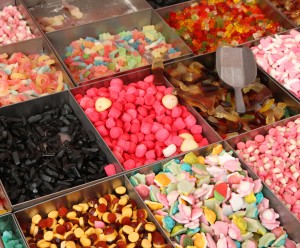What are good eating habits?
As soon as the first milk teeth appear, the poor eating habits can lead to the first early childhood caries.
These cavities, known as bottle cavities, can be caused by breastfeeding. The child should not be kept at the breast while sleeping and the gums and teeth should be cleaned afterwards. Bottles containing sweetened drinks (milk, fruit juice, soda) should be avoided at night.
As you get older, snacking all day long (and before bed!) increases the risk of caries. That is why it is important to eat only 4 meals a day (breakfast, lunch, snack and dinner) and to brushing your teeth after each of these meals.
Most of the foods that our children eat cause cavities. This includes sweets and candies, but also foods that we would not think of, such as bread, yoghurt or chips.
That's why the solution is not to forbid candy to your children, but rather to teach them not to snack and to make sure that they brush their teeth after each meal. The same goes for drinks. Between meals, drink only water!
Personally, having discovered that my daughter was so fond of candy that she was buying it on the sly, I told her that she could eat it but that she had to brush her teeth half an hour afterwards.
I also explained to her that it was better for her to eat her pack in one sitting, rather than taking candy all day long. A point lost for nutrition, but a point gained for her to keep her teeth healthy and beautiful.
In order to guide you through the good eating habits to adopt, here are the main sugars in the diet, with examples of foods that cause cavities:
- table sugar
- candy
- cakes
- ice creams and sorbets
- jams
- fruit-flavored or flavored yogurts
- dry fruits
- soft drinks
- breakfast cereals or bars
- salad dressings
- ketchup
- honey
- wheat
- fruits (bananas, melon)
- fruits (oranges, pears)
- fruit juice
- milk
- milk puddings
- yoghurt
- chips
- flour
- semolina
- organic cereals
- bread and rusks
- potatoes
- rice
- pasta
- vegetables


